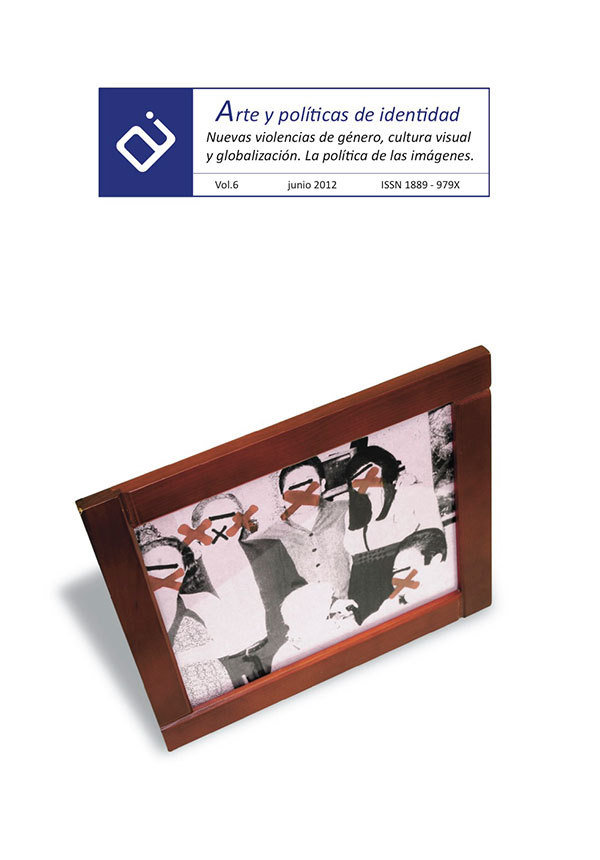Silence as a Form of Violence: Art History and Women
Abstract
Violence against women becomes evident in many ways. For this paper we have chosen to reflect on that form of violence that involves silencing or minimizing their findings, in this case in the creative realm. Against this silence, women have answered individually with irony, and collectively with sisterhood. There were not many other ways to face up to this kind of violence based on their cancellation as human beings. With the development of feminist art they also replied raising their voices. In any case, we have chosen, from creations related to feminism, those where silence is also broken with silence.
Downloads
References
Alexandrian, S. (1980 [1977]). Los libertadores del amor.Trad. Adolfo Sarabia Santander. Badalona: Ruedo ibérico.
Addis, S. (1989). The Art of Zen: Paintings and Calligraphy by Japanese Monks 1600-1925.Nueva York: Harry N. Abrams.
Ballester Buigues, I. (2012). El cuerpo abierto, Representaciones extremas de la mujer en el arte contemporáneo. Gijón: Trea.
Breton, A. (1972 [1924]) Los pasos perdidos. Madrid: Alianza editorial. Trad. Miguel Veyrat.
Caballero Guiral, J. (2002). La mujer en el imaginario surreal. Figuras femeninas en el universo de André Breton. Castellón: Universitat Jaume I.
Chadwick, W. (1992 [1990]). Mujer, arte y sociedad. Trad. María Barberán. Barcelona: Destino.
De Cecco, E. y Romano, G. (2002). Contemporanee. Percorse e poetiche delle artiste degli anni ottanta a oggi. Milano: Postmedia.
La ira del silencio. (2005, jueves 14 de julio). Arte y la Ira del Silencio. Red de solidaridades rebeldes. Revisado el 1 de julio de 2012 de http://www.solidaridadesrebeldes.kolgados.com.ar/spip.php?breve246.
Lebovici, E.(2009). La gêne du féminin. En Elles @centrepompidou. París: Centre Pompidou.
Leymann, H. (1996). The Content and Development of Mobbing at Work. European Journal of Work & Organizational Psychology. Vol. 5. Issue 2, 165-184.
Marín Torres, J. M. (2008). Silencio y filosofía (Pensar en, desde, contra el silencio). En M. Farrell y M. Dos (Eds.), Veintinueve maneras de concebir el silencio.Castellón: Diputación provincial.
Marinetti, F. T. (1983, [1919]). Contro il matrimonio. En Democrazia futurista. Dinamismo politico, en Teoria e invenzione futurista, a cura di Luciano di Maria. Milano: Mondadori.
Nicoïdski, C. (1994). Une histoire des femmes peintres. Francia: Jean-Claude Lattès.
Nochlin, L. (1994 [1971]). Why Have There Been No Great Women Artists? En L. Nochlin, Women, Art, and Power and Other Essays(pp. 145-178). London: Thames & Hudson.
Pizan, C. (de) (1995 [1405]). La ciudad de las damas. Traducción de Maire-José Lemarchand. Madrid: Siruela.
Plinio el Viejo, (2003, publicada antes del año 77 de nuestra era) VII, 15. Historia natural. Madrid: Gredos.
Pollock, G. (1994). Histoire et politique: l’histoire de l’art peut-elle survivre au féminisme? En Féminisme, art et historie de l’art. París: École Nationale Supérieure des Beaux-Arts.
Weininger, O. (1985 [1902]). Sexo y carácter. Traducción del alemán de Felipe Jiménez de Asúa. Barcelona: Península.
Weidner, M. (Ed.). (1990). Flowering in the shadows. Women in the History of Chinese and Japanese Painting. Honolulu, Hawai: University of Hawaï Press.
-
Abstract5283
-
PDF (Español (España))4624
Works published in this journal are subject to the following terms:
- The Service of Publications from the University of Murcia (publishing house) keeps the published works’ copyrights, and favors and allows the reuse of these works under the license indicated in point 2.
- Works are published in the journal’s online edition under the license Creative Commons Reconocimiento-NoComercial-SinObraDerivada 3.0 España(texto legal). They can be copied, used, disseminated, transmitted and publicly exhibited, as long as: i) the author and original source of publication are cited (journal, publishing house and work’s URL); ii) they are not used for commercial purposes; iii) the existence and specifications of this license are mentioned.
3. Conditions for auto-file. It is allowed and encouraged that authors share electronically their pre-print version (the pre-reviewed version) and /or post-print version (the reviewed and accepted version) of their Works before the publication, since it promotes its circulation and dissemination. RoMEO color: green.











